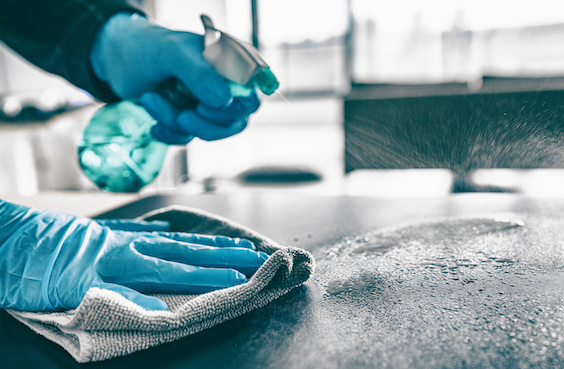As we approach the Thanksgiving holiday, with the COVID-19 pandemic creating exceptional circumstances for hotels and travelers alike, one of consumers’ most pressing concerns is cleanliness. As good hygiene practices are one of the best ways to keep travelers and employees safe, this topic is perhaps more important now than ever.
I have studied this subject in depth as the Aramark chaired professor in the hospitality department at the University of Delaware’s Alfred Lerner College of Business and Economics. One of my research papers, which I authored with UD colleague Jing Ma and three other hospitality professors from Purdue University and James Madison University, led to three key takeaways that hotel operators should consider this holiday season to maximize their business, safety and reputations.
1. When marketing cleanliness, focus on certain areas.
Our research paper, “Does hotel cleanliness correlate with surfaces guests contact?”, published in the International Journal of Contemporary Hospitality Management,surveyed hotel guests across the United States. We asked what areas hotel guests perceive as “high-touch” and “low-touch.” Understandably, guests consider the high-touch areas to be the most important when making a judgment about a hotel’s cleanliness.

Sheryl Kline is a professor in the Department of Hospitality and Sport Business Management at the University of Delaware.
For hotel managers, this means that when creating marketing materials that emphasize the cleanliness of your hotel, these perceived high-touch areas should be central to your marketing. This may translate into increased guest satisfaction scores, hotel image, loyalty and more.
The areas perceived as the highest touch were by far related to bed linens and blankets. Other perceived high-touch areas inside guest rooms included TV remote controls, door handles, bathroom sinks and faucets, and toilet seats. These areas should be the stars of your cleanliness-related marketing materials.
Guests perceived public areas to be lower touch, which makes sense since guests spend most of their time in their rooms. However, of the public areas, the highest perceived touch spots were elevator buttons, front door handles, ice machines and hand railings. If you want to emphasize the cleanliness of your public spaces, these are the items to feature. Guests also want to see this cleaning being done in public spaces. Having housekeeping personnel regularly clean public spaces helps guests to see that you are serious when it comes to providing clean and safe accommodations.
In addition, strengthen this messaging by being specific. Explain the cleaning processes used in your property. Telling guests that you regularly use disinfectants in the laundry and that you disinfect surfaces as a regular part of the cleaning process supports this messaging.
2. Remember that perceptions can be misleading.
Interestingly, just because guests perceive an area to be high touch does not mean that it is most likely to be dirty. Our team used adenosine triphosphate (ATP) tests to compare the actual cleanliness of items with guests’ perceptions of them, and this comparison found a number of disparities.
For example, while guests rightly perceive beds and blankets to be the highest-touch areas, they were found to be one of the cleanest spots within hotels due to standard laundry practices. In another example, guests ranked the inside of the guest room door as a very low-touch point, but it was found to be in the middle range for ATP test-detected contaminants.
Further, this study empirically proved that it is almost impossible to tell if an accommodation is clean by looking at it. Anyone can do a visual inspection of a room, and it can look clean, but that does not necessarily mean that it is clean. This means that, beyond consumer perceptions, hotel cleaning practices should be based in scientific fact.
3. Base your cleaning practices in the science of guest behavior.
Any hotel operator would agree that this year has seen an increased emphasis on cleaning practices, and those in management have been working to set and maintain these standards. This research reinforces the importance of keeping the high-touch concept in mind in the course of this work.
Effective hotel cleaning programs should be derived from both the amount of guest contact on speci?c surfaces and a good inspection method for cleanliness to both enhance guest satisfaction and provide cleaner and safer hotel guest rooms. In other words, what guests do should affect what is done in hotel cleaning.
Using the results of this study, hotel managers can revise their housekeeping manuals and cleaning practices to emphasize the frequency of cleaning high-touch areas and deep or specialized cleaning of these surfaces, whether through steam vapor or UV cleaning. Although the use of ATP meters or other scienti?c tools to assess cleanliness is not yet common in the hotel industry, housekeeping directors and hotel owners can take an advantage of the practical ?ndings of this study to maintain their hotels’ levels of cleanliness and guest satisfaction.
